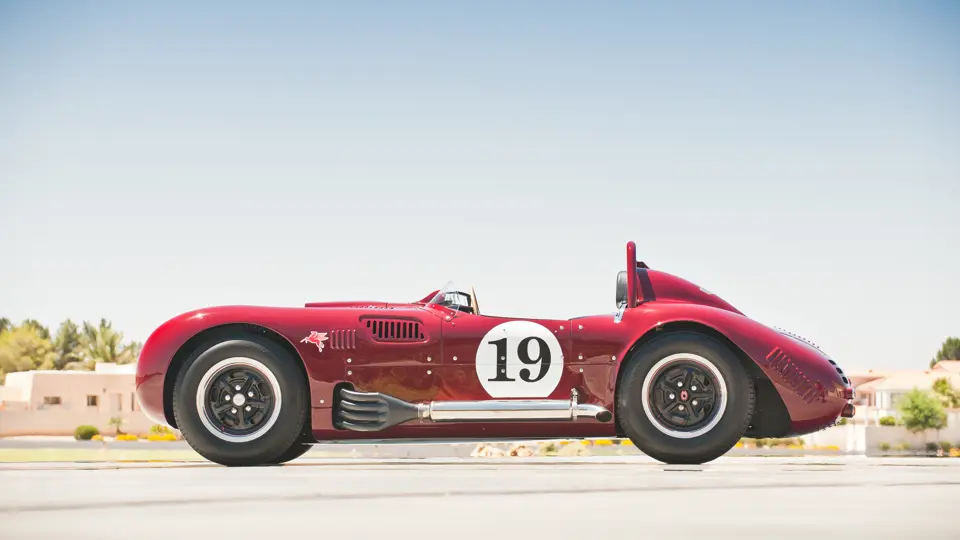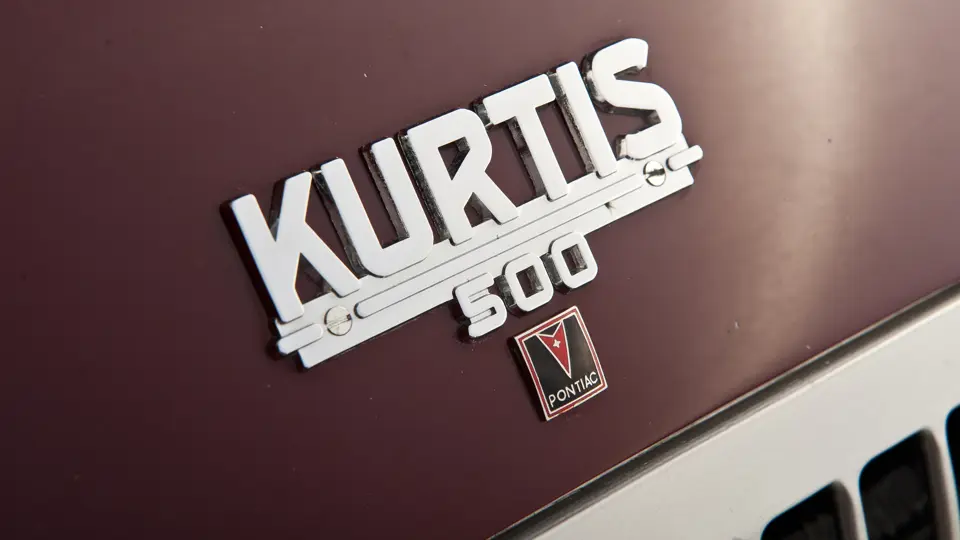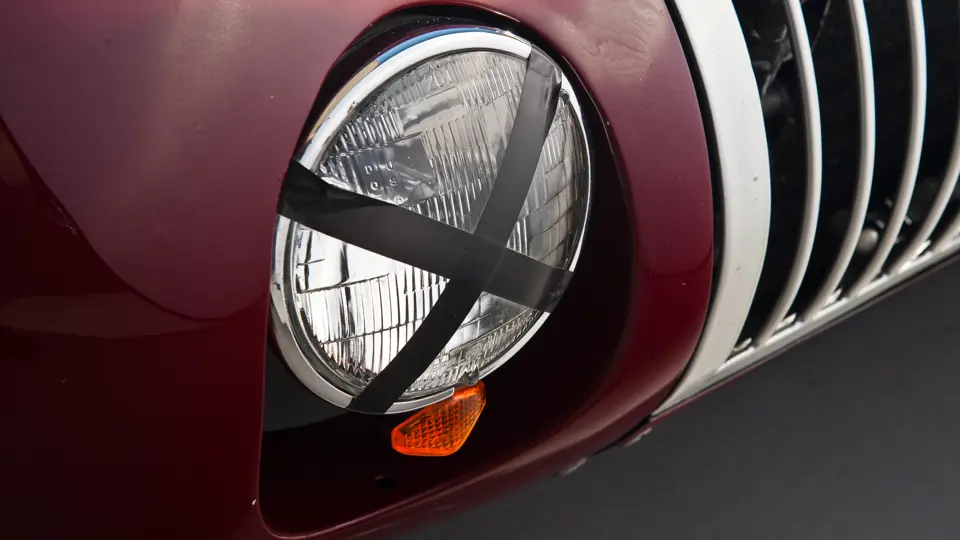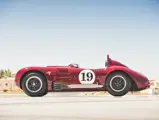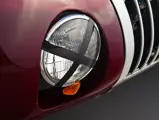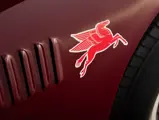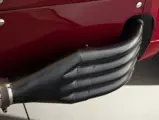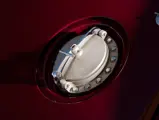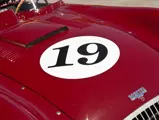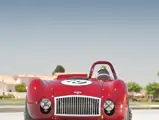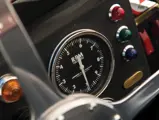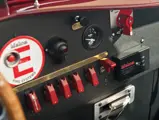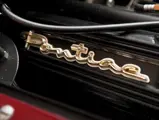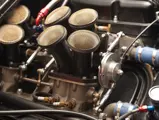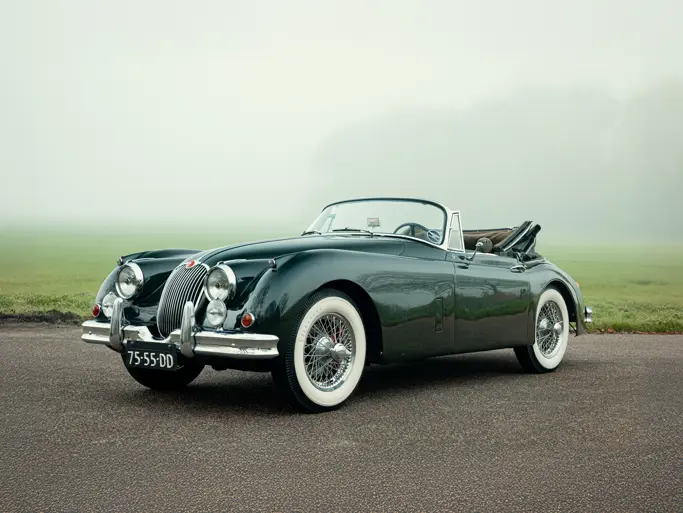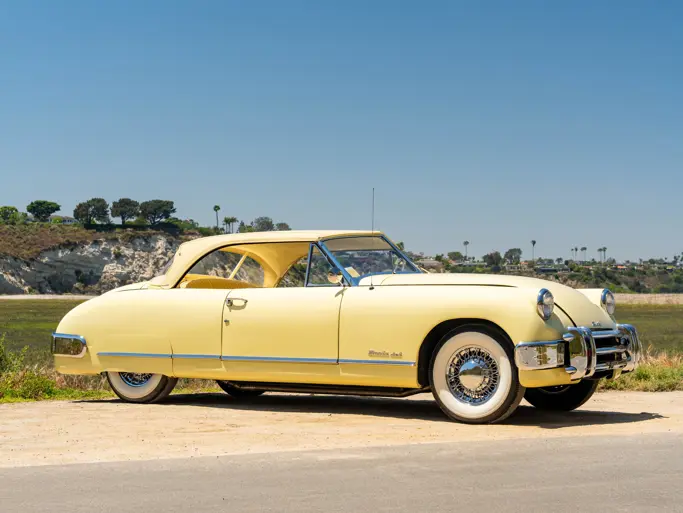Est. 500 hp, 370 cu. in. Pontiac OHV V-8, Hillborn injection, Borg-Warner T10 four-speed transmission, solid axles front and rear with suspension by four torsion bars, four-wheel disc brakes. Wheelbase: 96"
- The first Kurtis 500SX roadster completed by the factory
- Raced by Mickey Thompson and Bobby Unser in the 1950s
- Ground-up restoration in the UK with FIA and UK MSA papers
- Competed at Goodwood Festival of Speed and Goodwood Revival
In the early 1950s, Frank Kurtis’s cars dominated the Indy 500. Bill Vukovich won the 1953 race and collected $89,496, but the first seven finishers were Kurtises. In all, 21 Kurtis cars finished in the money, and an amazing 56 entries were Kurtis-Kraft, though not all qualified. Kurtis racers won Indianapolis in 1950, ’51, ’53, ’54 and ’55 and filled out the top 10 places in the other years. The story was the same at all the other tracks across the country.
Frank Kurtis’s creative engineering had spread across the country through his dirt-track sprint cars, which bred a new generation of American drivers who went on to SCCA, Indianapolis, NASCAR and Formula 1. The big question was whether he could sell a sports car to the public. Kurtis had already tinkered with an aerodynamic two-seater in 1949 and built 36 cars before he sold his design to Earl “Mad Man” Muntz, who stretched the wheelbase into a large four-seater.
In 1951, Kurtis turned his expertise to the 500KK kit chassis, with tube frame, solid axles and torsion bar suspension. This could carry a number of fiberglass bodies, from Glasspar, Woodill, Allied and Victress or have the barebones Indy configuration with fenders as an add-on. Chassis from 88 inches to 100 inches were offered, and powerplants ranged from Ford flatheads to Chrysler’s new Hemi and Cadillac V-8s.
In 1954 Kurtis offered a complete version of the KK, the 500S, with aluminum body and cycle fenders. Twenty-one were built, and they proved fiercely competitive, with Bill Stroppe a familiar sight on West Coast podiums. In 1953, he won seven of nine races, powered by a mere 200-hp Mercury flathead and upsetting a number of Ferraris, Jaguars and Cunninghams. The torsion bar suspension and the Halibrand quick-change rear end could be quickly adjusted for each course, and Stroppe’s luck continued through 1954. But just as he and his partner Clay Smith were gearing up for Le Mans in 1955, Smith was killed in a pit accident, and Stroppe had to sell the car to pay for his funeral.
Looking for a larger market, Kurtis tried again with a Corvette-like roadster, the 500M in 1954. This had a fiberglass body with recessed side panels, often in contrasting colors, and steel panels around the passenger compartment. Only 25 500Ms were sold before production ceased in 1955, as the American public opted for more comfort than the Kurtis could provide. A joint business deal with McCullough proved disastrous and bankrupted the company. Kurtis ceased building cars in 1957, diversifying into boats and starter carts for jet aircraft, including the SR-71 Blackbird.
Like the iconic Allard J2X, Kurtis’s 500S remained competitive, and his last model, the SX, was his best. It’s estimated that 12 chassis were completed and generally agreed that six were sold as rolling chassis and four as kits. Four 500SXs were reportedly completed by the factory. They were the final iteration of Bill Vukovich’s 1953 Indy 500 winning chassis, with solid axles and four torsion bars, which were individually adjustable for ride height and handling. Wheels were Halibrand magnesium, and the cars had a quick-change rear end, disc brakes, Borg-Warner or Jaguar four-speed transmissions and a choice of engines.
The chassis was slightly different in front than earlier cars, with the left suspension bracket able to rotate while the right was fixed firmly in place. The frame was a fully tubular space truss, widened at the cockpit for FIA sports car rules and with the battery and fuel tank as far back as possible for weight distribution. The full-width body was formed from aluminum panels that could be removed quickly with Dzus fasteners. There was only one door, on the passenger side. The complete cars weighed about 2,200 pounds and cost $6,000 without an engine – an extraordinary sum of money.
The car on offer today is the first 500SX, ordered new by Albert Hosking of El Monte Cadillac in California, and its build was chronicled in the February 1955 issue of Hot Rod magazine. On Hosking’s death, SX-001 was sold to Mickey Thompson, the brilliant racer who at one time held almost 200 FIA International and USAC national speed records. Chief among them was his 1960 land-speed record of 406.6 mph at Bonneville in his four-engined Pontiac-powered Challenger I.
Thompson was a force at Indy in the early 1960s, developing a rear-engine Buick-powered car, but his indelible mark was at the drag-strip, clear through the 1960s. Thompson and Jerry Unser raced SX-001 with its original Cadillac motor until Thompson’s Pontiac sponsorship led him to change it in the late 1950s, and the car has been Pontiac-powered since then. SX-001 was raced by Paul Cunningham into the 1960s, gradually fading away.
The present owner discovered SX-001 in 1996 and commissioned a ground-up restoration in 2002 to exacting standards. The quality of the work (and SX-001’s subsequent performance) is reflected in invitations to the Goodwood Festival of Speed and the Goodwood Revival.
When the car was found, it was complete but without an engine and transmission. The search for a correct motor turned up what can only be termed the Holy Grail for this car, which was bought from a noted Indy 500 collector who had saved it for just such an occasion.
In 1958, Frank Kurtis built an Indy roadster for the Firestone Tire and Rubber Company for high-speed testing. The motor was a one-off Pontiac engine built by Chicago race engineer Ray Nichels. Nichels and Kurtis planned a limited number of engines for racing, but Nichels has confirmed that this was the only motor built.
A story in the April 1960 Sports Car magazine describes it in detail. Specifications include: a 370-cubic inch OHV V-8; Hillborn-injected with dry sump; magnesium front timing cover, oil pan and rocker covers; gear-driven Offenhauser water pump and oil pump, Iskanderian camshaft and roller lifters, polished and ported heads, big valves and stronger springs; Vertex magneto; high-compression pistons; and steel main bearing caps.
The engine was freshened up by Larry Ofria at Valley Head Service in Los Angeles, who installed Carillo rods and then dyno’d the motor at over 500 hp. When the fuel-injection system was sent back to Hillborn, the company confirmed Firestone as the original purchaser. The correct Borg-Warner T10 transmission was rebuilt by 40-year veteran Brian Higgins of S&K Speed in Long Island, New York.
The restoration of SX-001 was completed in the UK by Ron Jenkins and his crew at RaceSport International and the following specialists. The body is completely original and was refinished by third-generation specialist Ian Pitney and painted by Ferrari restorer Kevin O’Rourke at Moto Technique Ltd. The exhaust system was handmade on the car by 45-year veteran Dave Kirby, ceramic coated and fitted with custom-made Burns mufflers. SX-001 was rewired by Bentley and Rolls-Royce restorer Jim Gazey and the leather upholstery replaced by Rolls-Royce veteran Garry Wright.
SX-001 is not just a pretty face. Despite being restored to concours standards, it is built to walk the walk. The car has current FIA papers and a UK MSA race log book. During the restoration, modern safety equipment was installed including a built-in fire system, fuel cell, kill switch, rear rain light and safety belts.
Ideally suited for the racetrack, SX-001 would also be a wonderful car for a number of distance driving events, including the Colorado Grand. One thing is for sure: this brutally fast Kurtis 500SX will run at the head of the pack wherever it appears.

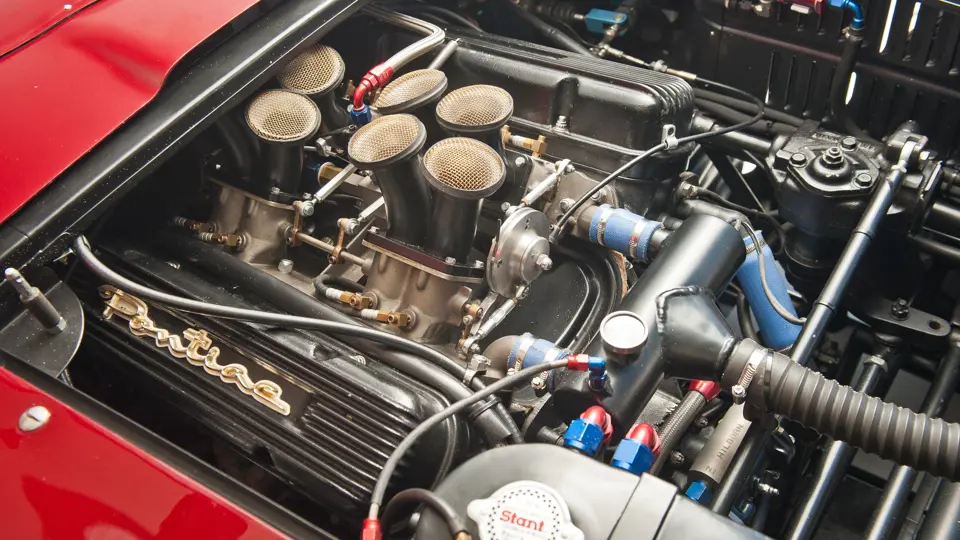


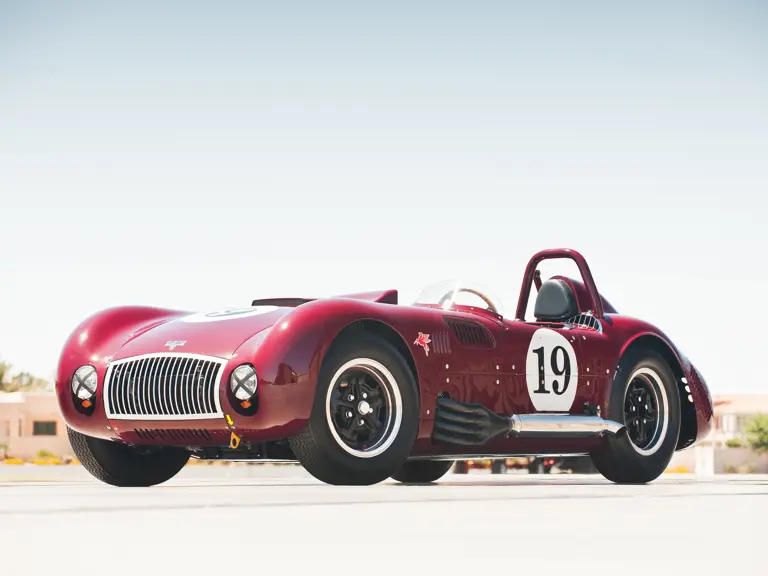

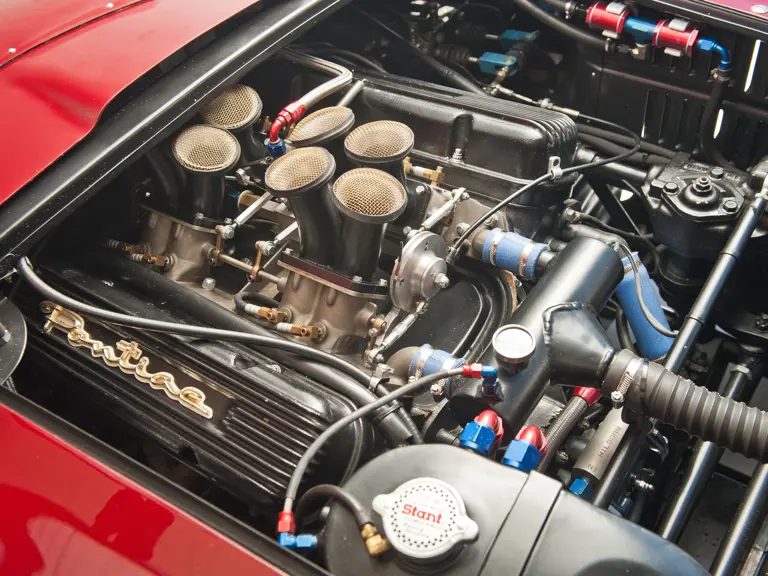
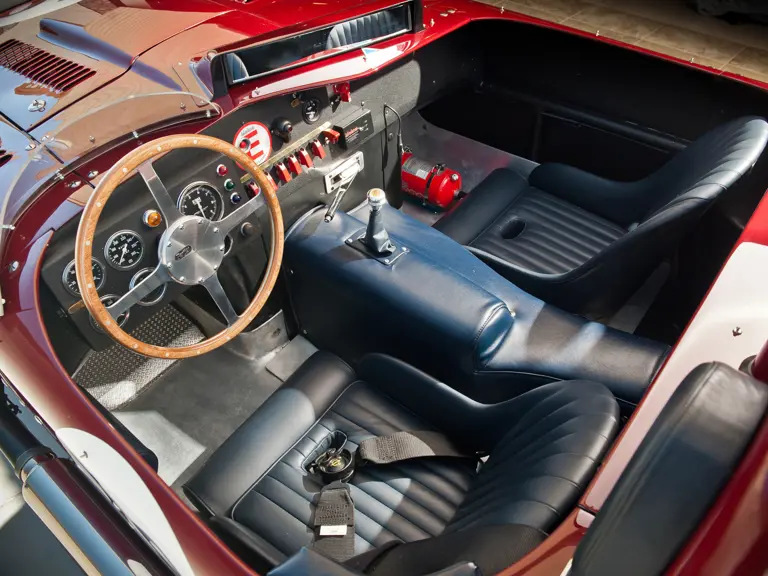


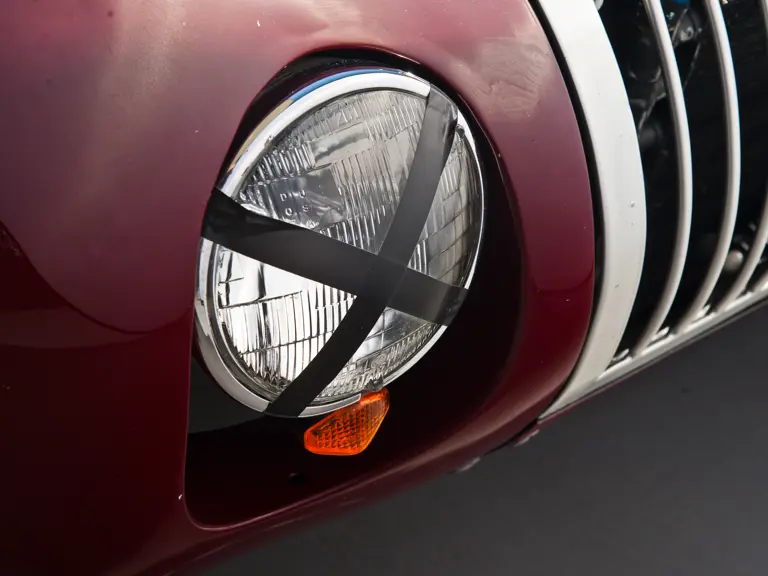


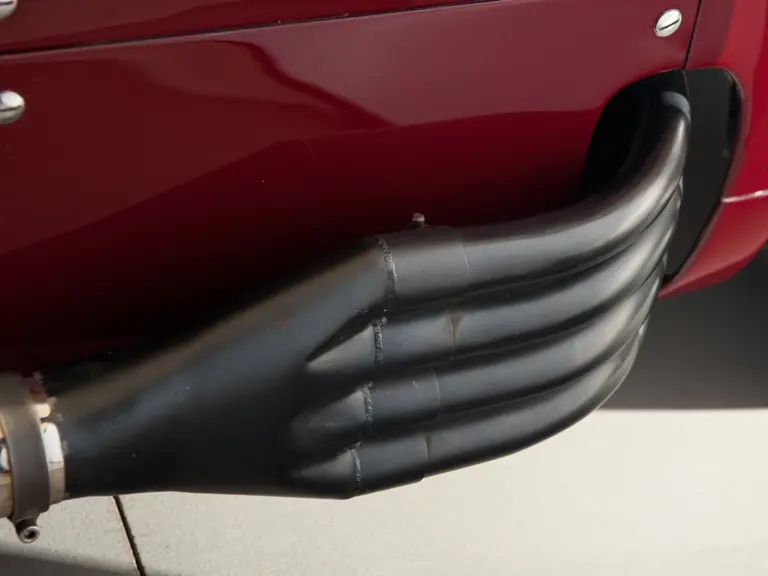
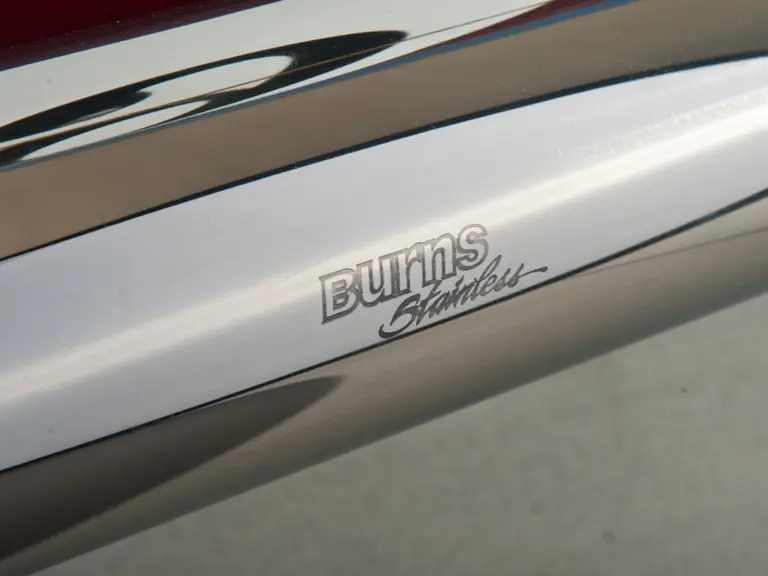
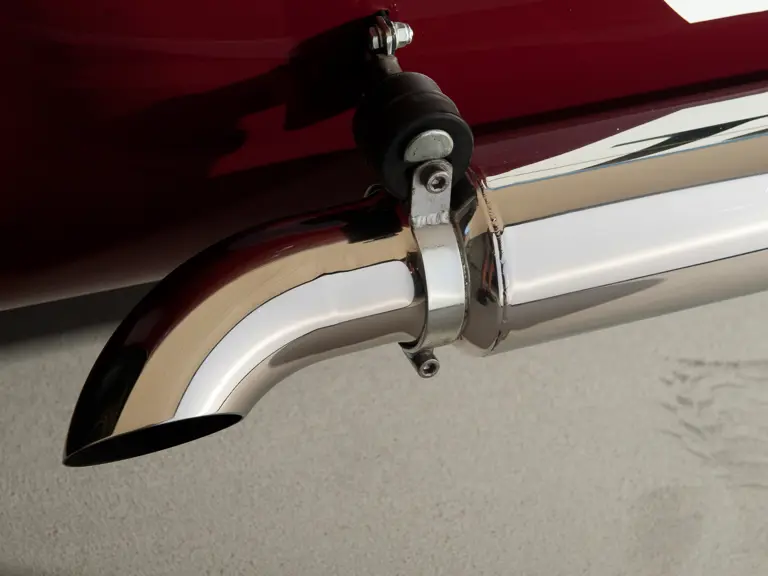
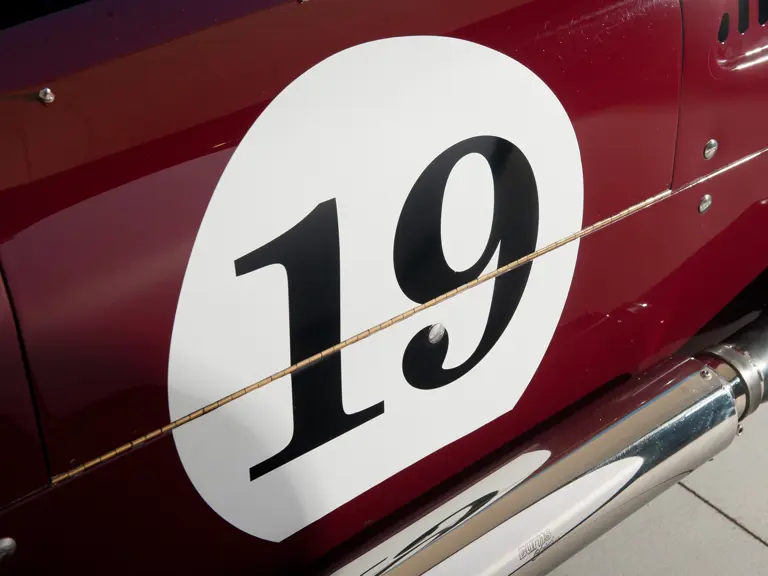
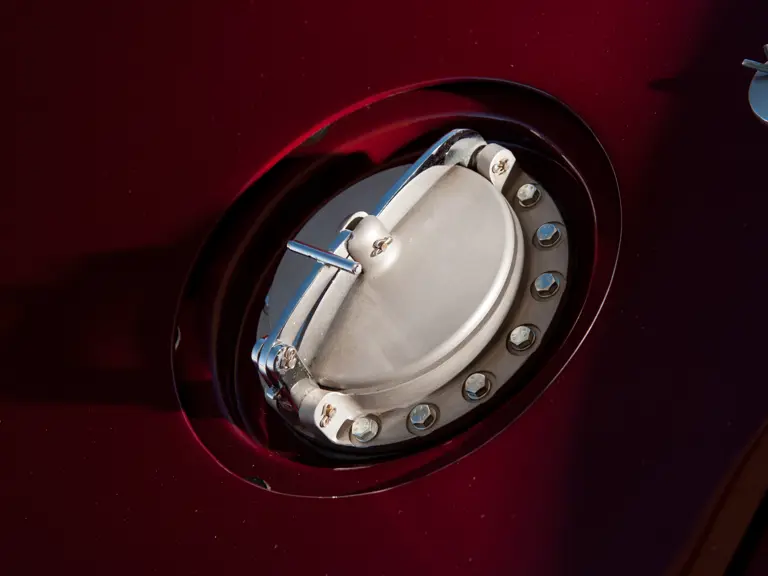
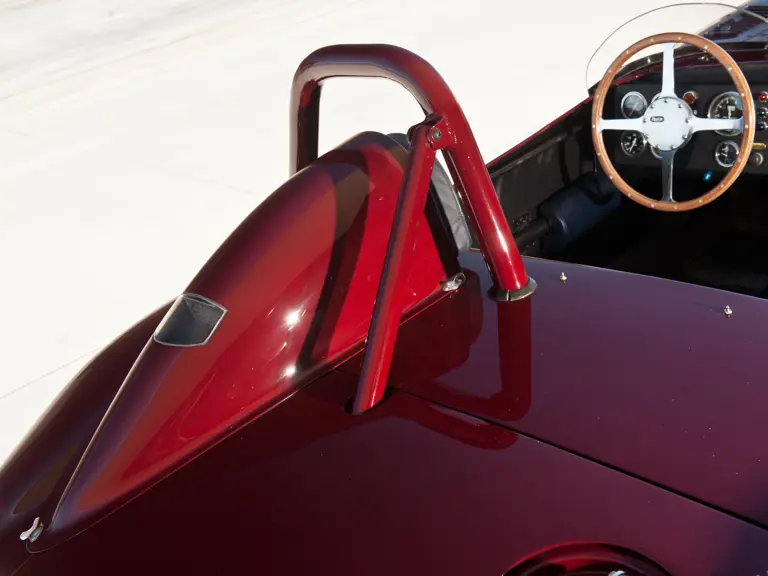

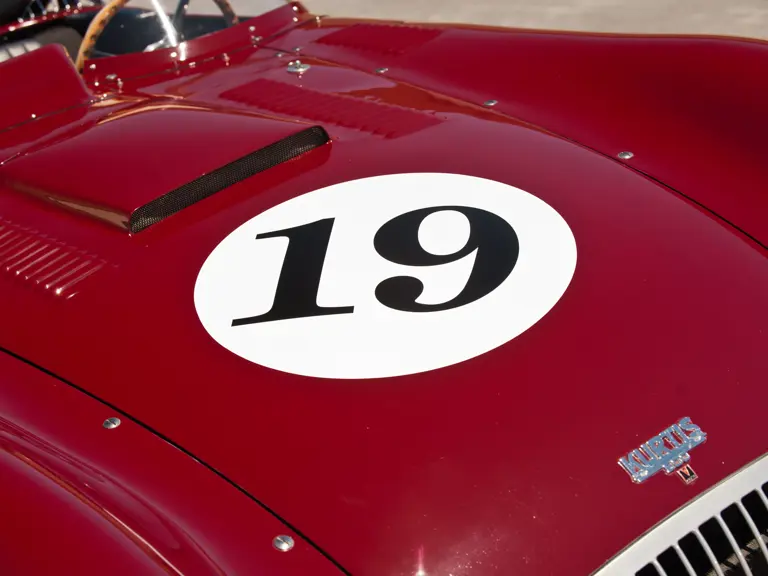

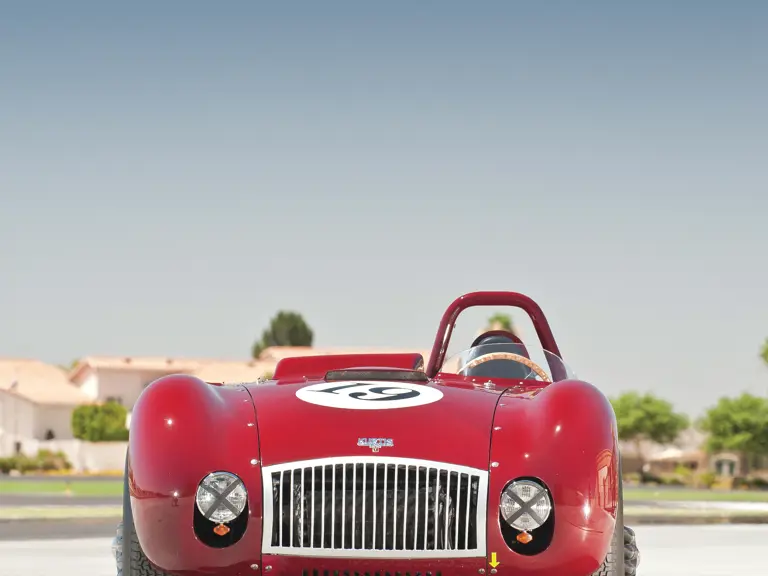

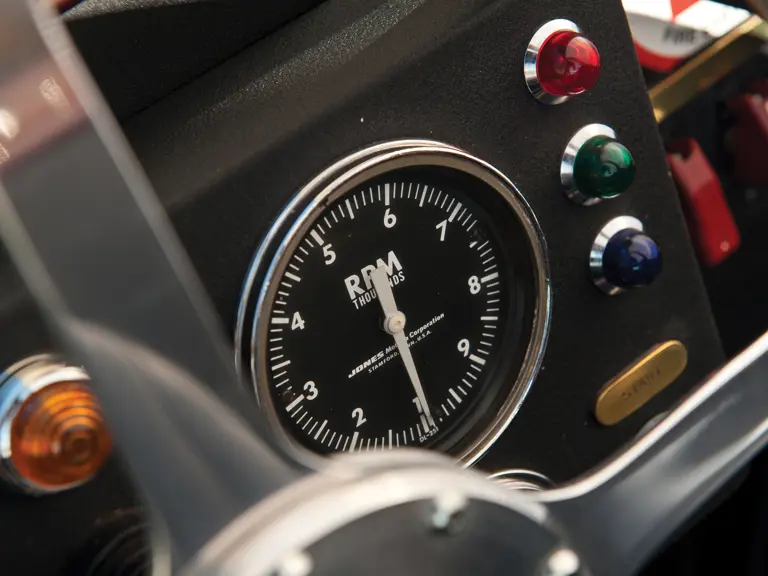
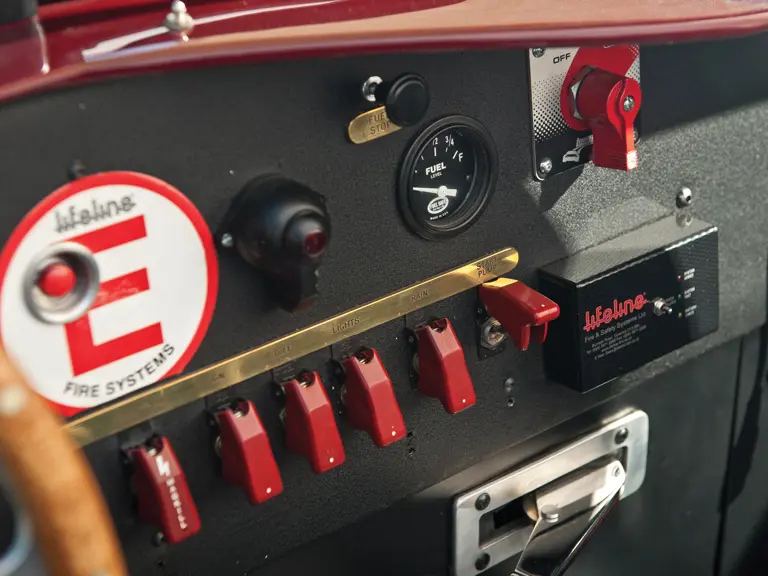

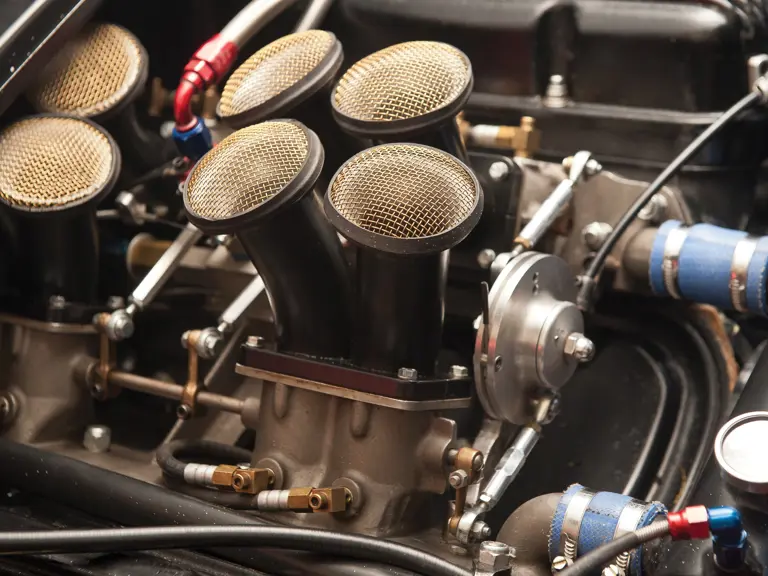
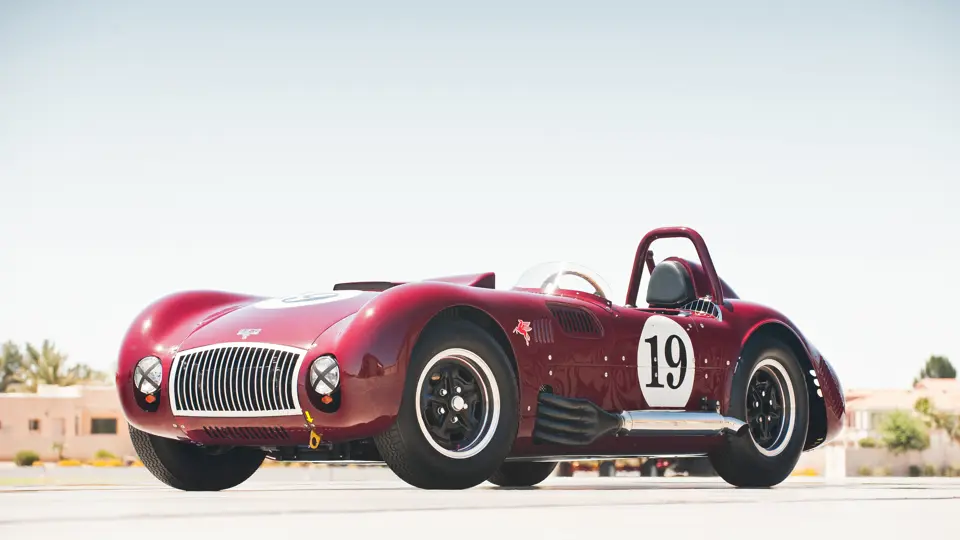
 | Monterey, California
| Monterey, California
